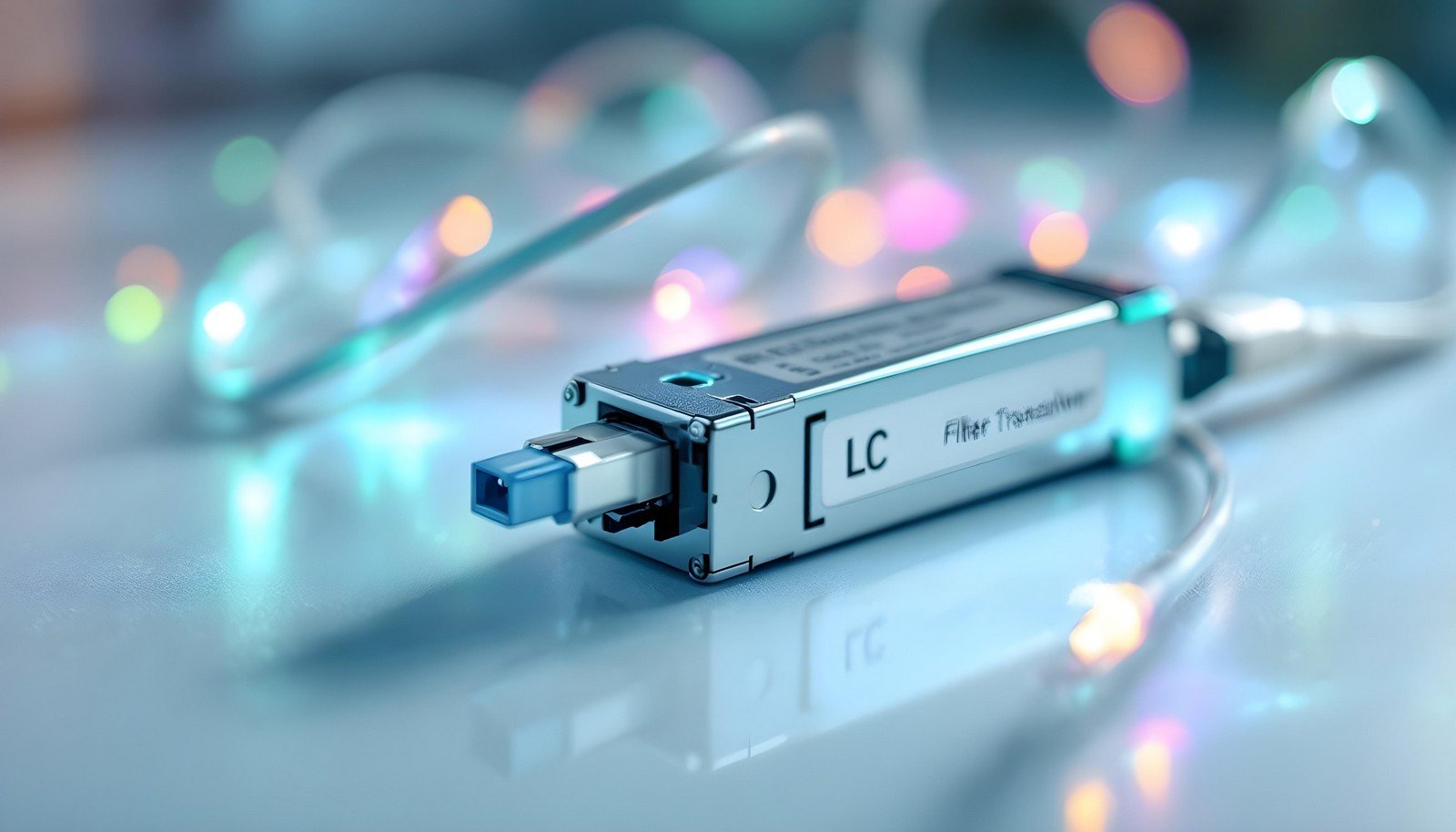Fiber Optic Transceiver

Quick Navigation:
- Fiber Optic Transceiver Definition
- Fiber Optic Transceiver Explained Easy
- Fiber Optic Transceiver Origin
- Fiber Optic Transceiver Etymology
- Fiber Optic Transceiver Usage Trends
- Fiber Optic Transceiver Usage
- Fiber Optic Transceiver Examples in Context
- Fiber Optic Transceiver FAQ
- Fiber Optic Transceiver Related Words
Fiber Optic Transceiver Definition
A fiber optic transceiver is a device used in telecommunications and data transmission networks to transmit and receive data over optical fiber cables. It converts electrical signals into optical signals for outbound transmission and optical signals back into electrical signals for inbound reception. These transceivers are essential for high-speed and long-distance data communication and are used in various applications, including internet infrastructure, data centers, and cable television networks.
Fiber Optic Transceiver Explained Easy
Imagine sending messages using light. A fiber optic transceiver acts like a magic flashlight that turns your message into a beam of light. This light travels through a special glass wire, and at the other end, another transceiver changes the light back into the original message. It’s how the internet and data are sent really fast over long distances.
Fiber Optic Transceiver Origin
The development of fiber optic transceivers began in the 1970s with advancements in optical fiber technology. Bell Laboratories pioneered the field, creating devices that could transmit data using light instead of traditional electrical signals. This innovation transformed global communications.
Fiber Optic Transceiver Etymology
The term "transceiver" combines "transmitter" and "receiver," emphasizing the dual function of the device. "Fiber optic" refers to the optical fibers used for light-based data transmission.
Fiber Optic Transceiver Usage Trends
With the increasing demand for faster internet and higher bandwidth, fiber optic transceivers have become integral in telecommunications. Over the past two decades, their adoption has skyrocketed due to the rise of cloud computing, streaming services, and 5G networks. They are now standard in most high-speed network infrastructures.
Fiber Optic Transceiver Usage
- Formal/Technical Tagging:
- Optical Communication
- Network Hardware
- Data Transmission - Typical Collocations:
- "fiber optic transceiver module"
- "optical signal transmission"
- "SFP fiber optic transceiver"
- "10G transceiver"
Fiber Optic Transceiver Examples in Context
- Data centers use fiber optic transceivers to enable high-speed connections between servers.
- A telecommunications company installs fiber optic transceivers to enhance internet connectivity in rural areas.
- Modern cable TV networks rely on fiber optic transceivers for delivering high-definition channels.
Fiber Optic Transceiver FAQ
- What is a fiber optic transceiver?
It is a device that transmits and receives data via optical fiber cables, converting electrical signals into light signals and vice versa. - Why are fiber optic transceivers important?
They enable high-speed and long-distance data transmission, critical for internet, telecommunications, and data centers. - What are the types of fiber optic transceivers?
Common types include SFP, SFP+, QSFP, and CFP modules, each supporting different speeds and distances. - Where are fiber optic transceivers used?
They are used in internet infrastructure, data centers, and cable television networks. - What speeds do fiber optic transceivers support?
They range from 1 Gbps to 400 Gbps, depending on the model and technology. - How does a fiber optic transceiver work?
It converts electrical signals to light signals for transmission through optical fibers and reverses the process for reception. - What materials are used in fiber optic transceivers?
They typically use semiconductor components and glass or plastic optical fibers. - Are fiber optic transceivers energy-efficient?
Yes, they consume less power than traditional copper-based transmission devices. - What is the lifespan of a fiber optic transceiver?
They typically last 5-10 years, depending on usage and conditions. - Can fiber optic transceivers be upgraded?
Yes, newer modules can often replace older ones, provided they are compatible with the existing network.
Fiber Optic Transceiver Related Words
- Categories/Topics:
- Optical Communication
- Telecommunications Hardware
- Data Networking
Did you know?
Fiber optic transceivers are so precise that they can transmit data over distances as long as 100 kilometers with almost no signal loss, making them critical for undersea cables connecting continents.
PicDictionary.com is an online dictionary in pictures. If you have questions or suggestions, please reach out to us on WhatsApp or Twitter.Authors | Arjun Vishnu | @ArjunAndVishnu

I am Vishnu. I like AI, Linux, Single Board Computers, and Cloud Computing. I create the web & video content, and I also write for popular websites.
My younger brother, Arjun handles image & video editing. Together, we run a YouTube Channel that's focused on reviewing gadgets and explaining technology.



Comments powered by CComment